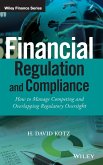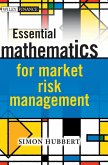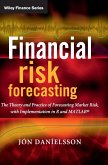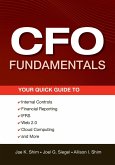This text focuses on the ways banks and other financial institutions measure market, credit and operational risk. John C. Hull's Financial Risk Management text is the only text to take risk management theory and explain it in a "this is how you do it" manner for practical application in today's real world. Hull's text offers students the ability to gain knowledge that will stay with them beyond college and be useful in the real world. Features + Benefits
For undergraduate or graduate courses with titles such as "Risk Management" and "Financial Risk Management" and courses on Financial Institutions focusing on regulation and risk management.
Written by a respected author in the professional market, Risk Management and Financial Institutions, 2/e is the only text that explains risk management theory in a "this is how you do it" manner, encouraging practical application in today's world.
Professors need a text that offers the latest information available, yet is written for application in a real work environment. Hull helps students gain knowledge that will stay with them beyond college.
Thoroughly updated, the Second Edition incorporates new information regarding Stress Testing, liquidity risks, ABSs, CDOs, and the credit crunch of 2007.
NEW-Version 1.53 of the DerivaGem software included with the book
-Consists of two Excel applications: the Options Calculator and the Applications Builder.
-The Options Calculator consists of easy-to-use software for valuing a wide range of options.
-The Applications Builder consists of a number of Excel functions from which users can build their own applications.
-It includes a number of sample applications that enable students to explore risk management issues. It also allows other assignments to be designed.
-Updates to the software can be downloaded from the author's website: www.rotman.utoronto.ca/~hull
End-of-Chapter Problems divided into two groups-"Questions and Problems" and "Assignment Questions". Solutions to Questions and Problems are at the end of the book and Solutions to Assignment Questions are made available from Prentice Hall to adopting instructors in the Instructors Manual.
Mathematical rigor and presentation of material has been managed carefully so that the book is accessible to as wide an audience as possible. For example, when covering copulas in Chapter 10, the intuition is presented first and then followed by a detailed numerical example.
Appendices that summarize some of the key derivatives pricing formulas-Reflect formulas that are important to risk managers.
NEW-Several new chapters added-Reflect the changes in financial institutions and their risk management practices:
-Three new chapters provide background material on financial institutions: Chapter 2 on banks, Chapter 3 on insurance companies and pension plans, and Chapter 4 on mutual and hedge funds.
-A new Chapter 16 is titled "ABSs, CDOs, and the Credit Crunch of 2007."
-A new Chapter 17 is titled "Scenario Analysis and Stress Testing".
-Separate chapters on liquidity risk and model risk are provided.
-A sample portfolio with accompanying spreadsheets.
OTHER POINTS OF DISTINCTION
Highly acclaimed authorship-John C. Hull is the respected author of the influential book Options, Futures, and Other Derivatives which has become the standard trade reference. It is referenced in many places by the Bloomberg system; it has been cited in court rulings and has led to a more practical orientation in college courses.
Based on one of the most popular MBA courses at University of Toronto entitled "Financial Risk Management"-Focuses on the ways banks and other financial institutions measure market, credit and operational risk.
An excellent description of the history of bank regulation and Basel II-Provides history of bank regulations and highlights reasons for its importance, gives students perspective on changing regulations, and keeps students' knowledge current for application in the work environment.
Copulas explained in a relatively uncomplicated way that readers can understand-Brings the student to an understanding of how to quantify how two or more variables depend on each other in a way that is tangible and memorable.
Discussion of operational risk, model risk, liquidity risk, economic capital and RAROC.
Many real-world examples that illustrate key points-Brings the student's focus from classroom application to thought about use in the industry.
No prerequisite in options and future markets needed-If students have taken the course ahead of time, the first four chapters are not necessary.
-Other chapters are flexible in terms of content and what the instructor incorporates into the course.
-Chapter 18 is a beneficial course for the last class because it draws together many of the points in the earlier chapters.
An excellent overview of the credit derivatives market-Covers history and important elements very clearly and thoroughly.
Business Snapshots
Preface
1. Introduction
2. Banks
3. Insurance
4. Mutual Funds and Hedge Funds
5. Financial Instruments
6. How Traders Manage Their Exposures
7. Interest Rate Risk
8. Value at Risk
9. Volatility
10. Correlation and Copulas
11. Regulation, Basel II, and Solvency II
12. Market Risk VaR: Historical Simulation Approach
13. Market Risk VaR: Model-Building Approach
14. Credit Risk: Estimating Default Probabilities
15. Credit Risk Losses and Credit VaR
16. ABSs, CDOs, and the Credit Crunch of 2007
17. Scenario Analysis and Stress Testing
18. Operational Risk
19. Liquidity Risk
20. Model Risk
21. Economic Capital and RAROC
22. Risk Management Mistakes to avoid
Appendix A: Compounding Frequencies and Interest Rates
Appendix B: Zero Rtes, Forward Rates, and Zero-Coupon Yield Curves
Appendix C: Valuing Forward and Futures Contracts
Appendix D: Valuing Swaps
Appendix E: Valuing European Options
Appendix F: Valuing American Options
Appendix G: Taylor Series Expansions
Appendix H: Eigenvectors and Eigenvalues
Appendix I: Principal Components Analysis
Appendix J: Manipulation of Credit Transition Matrices
Answers to Questions and Problems
Glossary of Terms
DerivaGem Software
Tables For N(x)
Index
For undergraduate or graduate courses with titles such as "Risk Management" and "Financial Risk Management" and courses on Financial Institutions focusing on regulation and risk management.
Written by a respected author in the professional market, Risk Management and Financial Institutions, 2/e is the only text that explains risk management theory in a "this is how you do it" manner, encouraging practical application in today's world.
Professors need a text that offers the latest information available, yet is written for application in a real work environment. Hull helps students gain knowledge that will stay with them beyond college.
Thoroughly updated, the Second Edition incorporates new information regarding Stress Testing, liquidity risks, ABSs, CDOs, and the credit crunch of 2007.
NEW-Version 1.53 of the DerivaGem software included with the book
-Consists of two Excel applications: the Options Calculator and the Applications Builder.
-The Options Calculator consists of easy-to-use software for valuing a wide range of options.
-The Applications Builder consists of a number of Excel functions from which users can build their own applications.
-It includes a number of sample applications that enable students to explore risk management issues. It also allows other assignments to be designed.
-Updates to the software can be downloaded from the author's website: www.rotman.utoronto.ca/~hull
End-of-Chapter Problems divided into two groups-"Questions and Problems" and "Assignment Questions". Solutions to Questions and Problems are at the end of the book and Solutions to Assignment Questions are made available from Prentice Hall to adopting instructors in the Instructors Manual.
Mathematical rigor and presentation of material has been managed carefully so that the book is accessible to as wide an audience as possible. For example, when covering copulas in Chapter 10, the intuition is presented first and then followed by a detailed numerical example.
Appendices that summarize some of the key derivatives pricing formulas-Reflect formulas that are important to risk managers.
NEW-Several new chapters added-Reflect the changes in financial institutions and their risk management practices:
-Three new chapters provide background material on financial institutions: Chapter 2 on banks, Chapter 3 on insurance companies and pension plans, and Chapter 4 on mutual and hedge funds.
-A new Chapter 16 is titled "ABSs, CDOs, and the Credit Crunch of 2007."
-A new Chapter 17 is titled "Scenario Analysis and Stress Testing".
-Separate chapters on liquidity risk and model risk are provided.
-A sample portfolio with accompanying spreadsheets.
OTHER POINTS OF DISTINCTION
Highly acclaimed authorship-John C. Hull is the respected author of the influential book Options, Futures, and Other Derivatives which has become the standard trade reference. It is referenced in many places by the Bloomberg system; it has been cited in court rulings and has led to a more practical orientation in college courses.
Based on one of the most popular MBA courses at University of Toronto entitled "Financial Risk Management"-Focuses on the ways banks and other financial institutions measure market, credit and operational risk.
An excellent description of the history of bank regulation and Basel II-Provides history of bank regulations and highlights reasons for its importance, gives students perspective on changing regulations, and keeps students' knowledge current for application in the work environment.
Copulas explained in a relatively uncomplicated way that readers can understand-Brings the student to an understanding of how to quantify how two or more variables depend on each other in a way that is tangible and memorable.
Discussion of operational risk, model risk, liquidity risk, economic capital and RAROC.
Many real-world examples that illustrate key points-Brings the student's focus from classroom application to thought about use in the industry.
No prerequisite in options and future markets needed-If students have taken the course ahead of time, the first four chapters are not necessary.
-Other chapters are flexible in terms of content and what the instructor incorporates into the course.
-Chapter 18 is a beneficial course for the last class because it draws together many of the points in the earlier chapters.
An excellent overview of the credit derivatives market-Covers history and important elements very clearly and thoroughly.
Business Snapshots
Preface
1. Introduction
2. Banks
3. Insurance
4. Mutual Funds and Hedge Funds
5. Financial Instruments
6. How Traders Manage Their Exposures
7. Interest Rate Risk
8. Value at Risk
9. Volatility
10. Correlation and Copulas
11. Regulation, Basel II, and Solvency II
12. Market Risk VaR: Historical Simulation Approach
13. Market Risk VaR: Model-Building Approach
14. Credit Risk: Estimating Default Probabilities
15. Credit Risk Losses and Credit VaR
16. ABSs, CDOs, and the Credit Crunch of 2007
17. Scenario Analysis and Stress Testing
18. Operational Risk
19. Liquidity Risk
20. Model Risk
21. Economic Capital and RAROC
22. Risk Management Mistakes to avoid
Appendix A: Compounding Frequencies and Interest Rates
Appendix B: Zero Rtes, Forward Rates, and Zero-Coupon Yield Curves
Appendix C: Valuing Forward and Futures Contracts
Appendix D: Valuing Swaps
Appendix E: Valuing European Options
Appendix F: Valuing American Options
Appendix G: Taylor Series Expansions
Appendix H: Eigenvectors and Eigenvalues
Appendix I: Principal Components Analysis
Appendix J: Manipulation of Credit Transition Matrices
Answers to Questions and Problems
Glossary of Terms
DerivaGem Software
Tables For N(x)
Index







